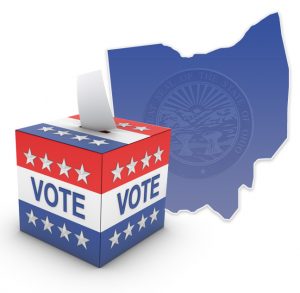
Ohio is both a battleground and bellwether for presidential elections. It is highly competitive and carries a relatively large electoral vote prize for presidential aspirants. It is also a perennial predictor of presidential elections.
Indeed, if there were a sure bet in presidential politics, Ohio would own the title, having voted for the winner every time since the end of World War II, with the one exception being 1960 when choosing Richard Nixon over John F. Kennedy.
Since that missed call nearly six decades ago, Ohio voters have proven to be almost equally split between the two major party candidates, voting for the Democrat in six elections and the Republican in seven. Moreover, Ohio’s governor — John Kasich — is currently running to be the Republican nominee for president, Cleveland will host the Republican National Convention, and 2016 may witness one of the nation’s marquee matchups in which Ohio could help decide party control of the U.S. Senate. (The most recent poll numbers — Quinnipiac 9/25-10/5 — have former governor Ted Strickland at 46% and Incumbent Senator Rob Portman at 43%, but within the margin of error).
So, it is no wonder Republicans and Democrats each hope 2016 will see Ohio vote in their favor. For Republicans, there is a case to be made for Ohio’s demographics. Ohio has a larger percentage of whites (83%) than the national average (77.4%), and has a much lower percentage of Hispanic or Latino (3.5%) than the national average (17.4%). These demographics, among other factors, led the Bush campaigns to focus heavily on the state of Ohio in 2000 and 2004.
Ohio has a larger percentage of whites (83%) than the national average (77.4%), and has a much lower percentage of Hispanic or Latino (3.5%) than the national average (17.4%)
Democrats are also optimistic about their presidential nominee taking Ohio. Ohio has always been a state with heavy union presence and ranks 16th in the nation for union membership. It is home to a number of large cities that historically vote Democrat, with the best example being the Cleveland area. The Obama campaign relied heavily on young voters in college towns and cities throughout the state to win Ohio in 2008 and 2012. Thus, a Democratic campaign capitalizing on young voters, urban areas, and union households should help the party make a strong play for Ohio in 2016.
Political scientists typically find that a few key factors are likely to impact presidential voting. First, we often look at recent statewide elections and the important issues in the state. Republicans have done well in statewide Ohio elections recently as evidenced by Kasich’s 30-point margin of victory in 2014. Further, 12 of 16 U.S. Representatives are Republicans. Dating back to 2000, the highest two-party vote margin for a president was Obama’s 52.3% in 2008. The 2016 election will also see the reemergence of issues like abortion, which has already started with Attorney General Mike DeWine’s threat to sue Planned Parenthood. Another issue that could impact voter turnout and the discussion in Ohio is the rising toll of heroin abuse throughout the state and the potential for legalized marijuana — in some form — to be on the ballot again. These issues give us only mixed signals as to which way Ohio voters will lean in 2016.
Ohio has always been a state with heavy union presence and ranks 16th in the nation for union membership.
Second, political scientists have found that the economy greatly impacts the vote. The economy should generally favor Democrats. The unemployment rate has dropped to 4.5% in Ohio (November 2015), while it is 5.0% nationwide. Ohio’s unemployment level is lower, by far, compared to the levels going into the last three presidential election cycles (5.7% in 11/2003, 5.6% in 11/2007, and 8.5% in 11/2008). It is not just Ohio’s economy that is doing well, as there is increasing evidence that Americans feel more comfortable making big purchases more than at any point before the 2008 recession. Political science research shows incumbent parties do well when the economy is doing well, and Democrats would seek to capitalize on this in Ohio and nationally.
Finally, approval of the incumbent — even if not running — has a major impact on how a state will vote. The eventual Democratic nominee may have reason to distance him- or herself from President Obama. In a 2015 Quinnipiac University poll, Ohio voters had the least favorable view of Obama out of any battleground state. Republicans would be wise to capitalize on this unfavorable impression of the administration, along with Kasich’s candidacy — even if it goes nowhere — and use positive press in the state from the Cleveland convention.
What does all of this say about Ohio’s electoral college votes in 2016? It is likely to be a very close election again, but there is still too much to be determined about eventual nominees and the other election markers we have raised. That said, we do see strong evidence from polling of GOP primary voters that national security and terrorism are chief concerns. However, if the economy continues on the current upward trend, especially relative to lackluster performance in Europe and developing markets, the Democratic candidate will have a built in advantage. Elections research shows that the economy tends to trump other issues, and voters will vote their pocket-books in the general election. But, one thing is for certain — come October all residents of Ohio will be tired of political commercials because both parties will bet heavily to win the Buckeye state.
Ben Toll is a Visiting Assistant Professor and Bryan W. Marshall is a Professor in the Department of Political Science at Miami University in Oxford, Ohio.




